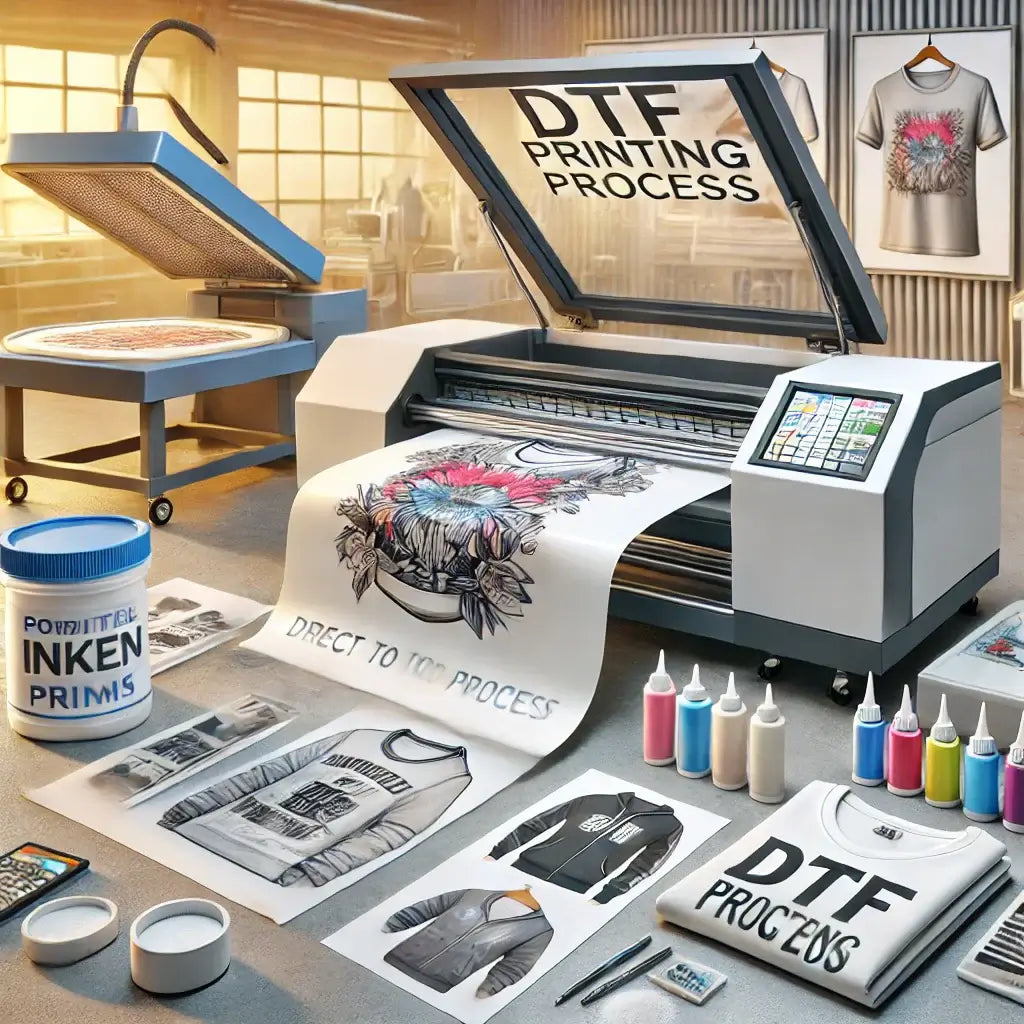
How Does DTF Printing Work
Share
Direct to Film (DTF) printing is a versatile and efficient printing process widely used in the textile industry to apply designs to various types of fabrics. Here's a breakdown of how DTF printing works:
1. Preparing the Design
The process begins with creating a design on a computer using graphic design software. This design can be colorful and complex without complicating the printing process.
2. Printing on Film
The prepared design is printed in reverse onto a special, clear PET film using a modified inkjet printer. The printer uses DTF specific inks, which are typically water-based pigment inks, designed to ensure good adhesion and color vibrancy.
3. Applying Powder Adhesive
After the design is printed on the film, a fine powder adhesive is evenly applied over the wet ink. This adhesive is crucial as it will bond the ink to the fabric later in the process.
4. Melting the Adhesive
The film, now with the design and adhesive, is passed through a dryer or under a heat source to melt the adhesive and cure the ink. The heating process fixes the adhesive firmly onto the printed ink.
5. Transferring to the Fabric
Once the film is prepared, it is placed onto the fabric where the design needs to be transferred. This is done using a heat press, which applies both heat and pressure. The heat activates the melted adhesive, bonding the ink permanently to the fabric.
6. Peeling and Finishing
After pressing, the film is peeled off while hot or cold (depending on the adhesive used), leaving the ink design on the fabric. The fabric might go through a final press to ensure the print is completely set.
7. Final Curing
Sometimes, a final curing step is required, especially for industrial purposes, to ensure the durability and washability of the print.
Advantages of DTF Printing
- Versatility: Works on a variety of fabric types, including cotton, silk, polyester, and blends.
- Quality: Produces vibrant, high-resolution prints that are durable and have good wash fastness.
- Efficiency: Suitable for both small custom batches and large production runs without the need for extensive setup, making it cost-effective and scalable.
- Ease of Use: Streamlines the production process, reducing the steps and complexity compared to traditional printing methods like screen printing.
DTF printing has gained popularity for its ability to efficiently produce high-quality, durable prints on a diverse array of textiles, catering to both large-scale manufacturers and small-scale custom fabric designers.
